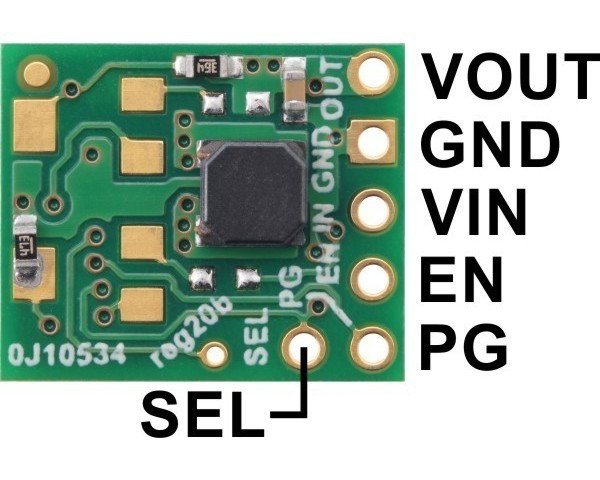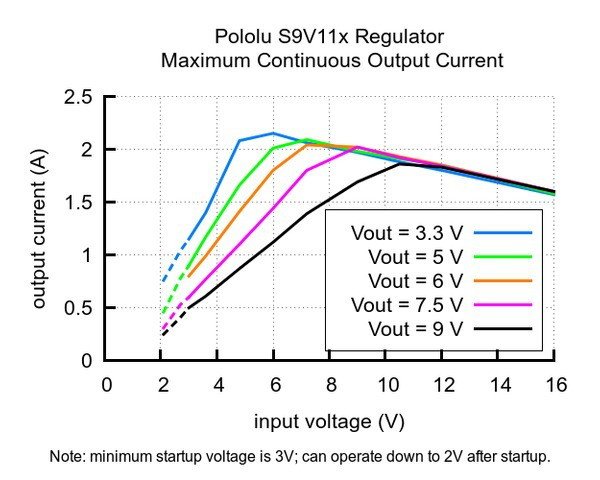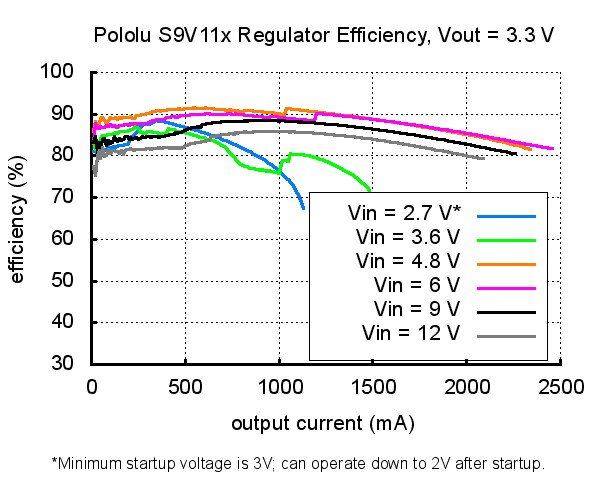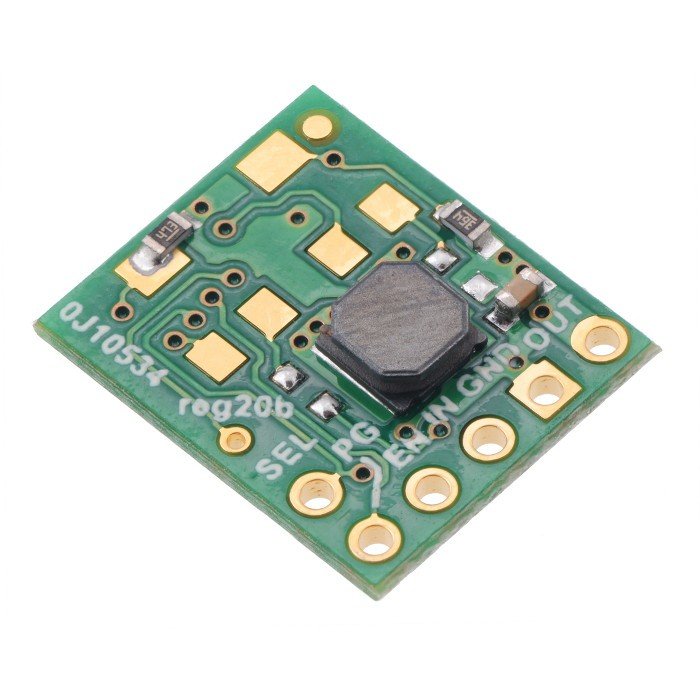Specification
- Input voltage: from 3 V to 16 V
- Maximum output current: 1.5 A
- Resting current: 1 mA
- Output voltage: 3.3 V (can be changed to 5 V using SEL pin)
- Short-circuit and overtemperature protection
- Under-voltage cut-off: 3 V
- Dimensions: 15 x 13 x 4 mm
- Weight: 0.7 g (without connectors)
Product description: S9V11F3S5C3 - step-up/step-down converter - 3,3 V 1,5 A - with low voltage cut-off - Pololu 2873
The converteris used to supply circuits operating at 3.3 V. The circuit has a wide range of input voltages, which makes it ideal for battery-powered designs. Application of S9V11F3S5C3ensures stability of power supplyduring the entire cycle of battery discharge. In order to increase reliability, the module is equipped with short-circuit protection and automatic power supply cut-off when the permissible operating temperature or minimum voltage is exceeded.
|
We also offer a set for building asmartphone charger with on-line manual. |
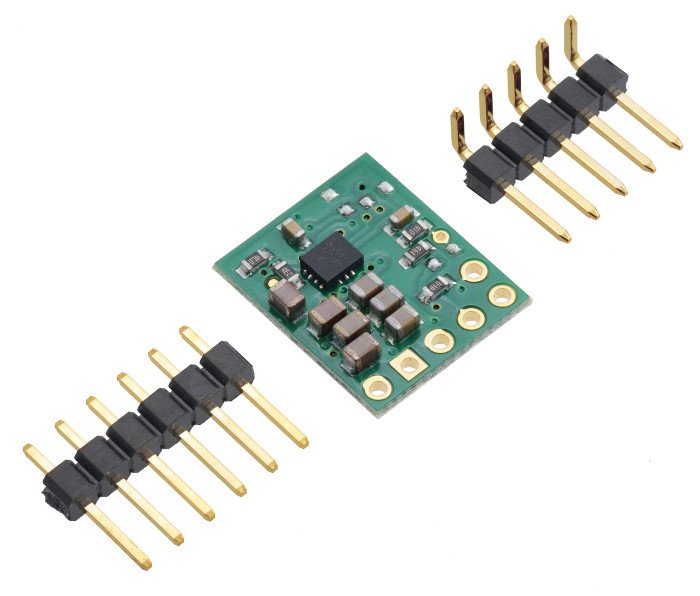 The kit includes goldpins for soldering.
The kit includes goldpins for soldering.
Directions for use
The module is very simple to use, it has three basic pins:
- VIN- input voltage from 3 V to 16 V. With a lower voltage the module will not turn on, higher may damage the system.
- GND- Ground of the system.
- VOUT- output voltage of 5 V.
Additional pins:
- EN- Enable input. It switches on the circuit after applying voltage above 0,8 V. It is connected through voltage divider withVIN, so it cuts off the power at VIN below 3 V.
- PG- voltage quality indicator. An open-drain output, it sets low when power drops below 90% of nominal voltage, also whenENpin is low. Returns to the high state when the mod 95 % is exceeded. Has high impedance, requires a pull-up resistor.
- SEL- output can be driven from 1.1 V to 16 V to change theVOUToutput to 5 V. SettingSELlow or unconnected setsVOUTto 3.3 V. To set to 5 volts permanently, solder a wire as shown below.
The allowable input voltage range is from 3 V to 16 V. The regulator will not turn on at a lower value. A higher voltage may damage the circuit.
The connectors are properly signed on the board.The pinout is 2.54 mm (goldpin connectors). The module can be plugged into thecontactboard, connected bywiresor soldered into a dedicated PCB.
Output current
The maximum current that can flow through the system depends on the value of the input voltage. This relationship is shown in the diagram below:
Maximum output current as a function of input voltage.
Efficiency
This parameter is especially important with battery power supply, when it is important for the system to work as long as possible on a single charge. The efficiency of the converter depends on the current flowing and the input voltage (graph below). On average, it is between 85% and 95%, which allows to use practically the maximum energy from the battery.
The efficiency of the converter depending on the current consumed.
Voltage jumps (pins)
In electronic circuits, the starting current may cause so-called spikes, sudden voltage jumps to a value above a set level. If the amplitude of the spikes exceeds the allowable value of the regulator, the regulator can be destroyed. Therefore, if the circuit will be supplied with voltage above 9 V or the load will have high inductance, we recommend soldering a capacitor of 33 µF / 20 V or higher as close as possible to the circuit between VIN and GND.
Useful links |




















































































































































































































































































































































